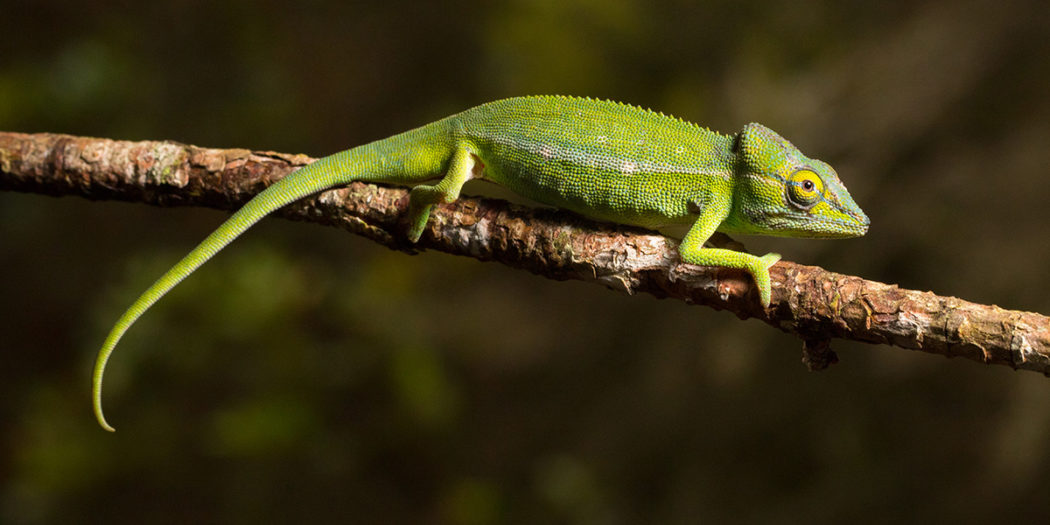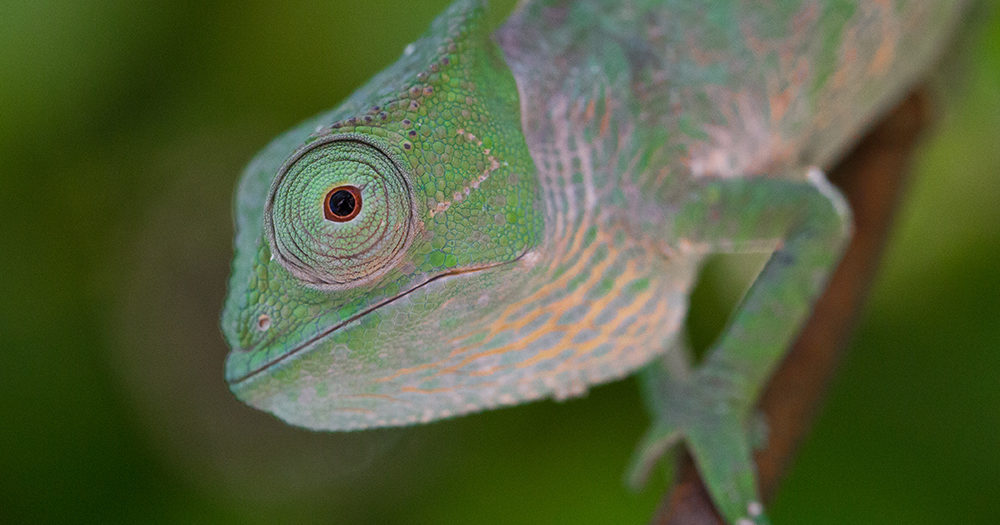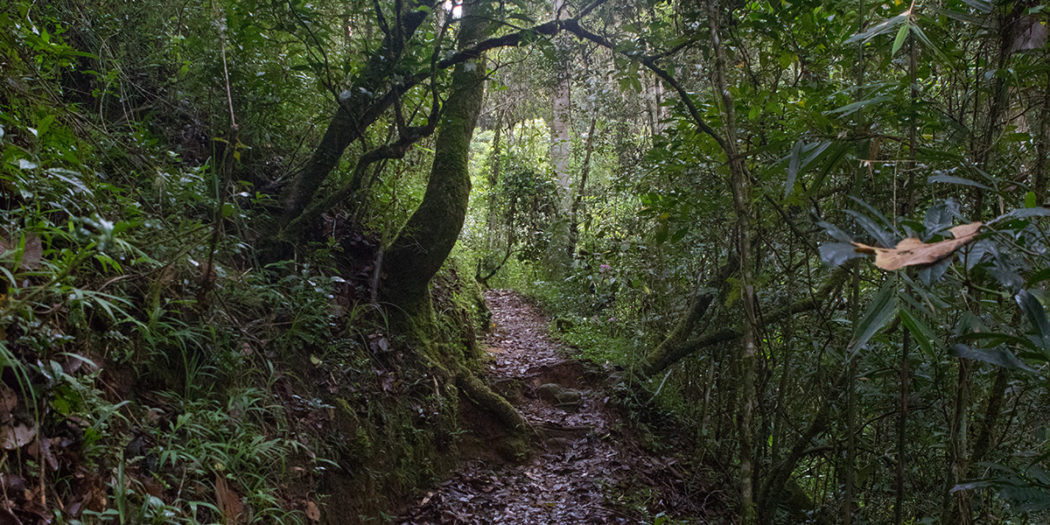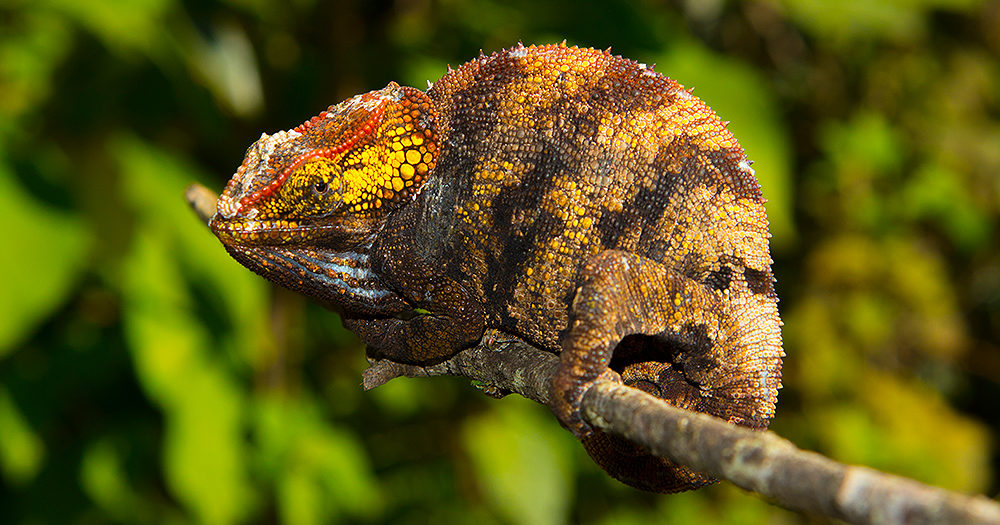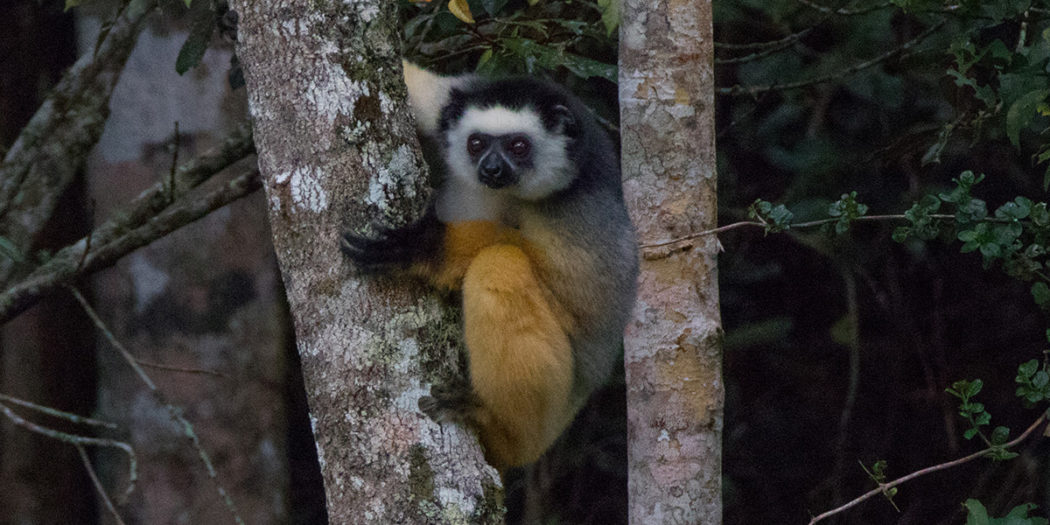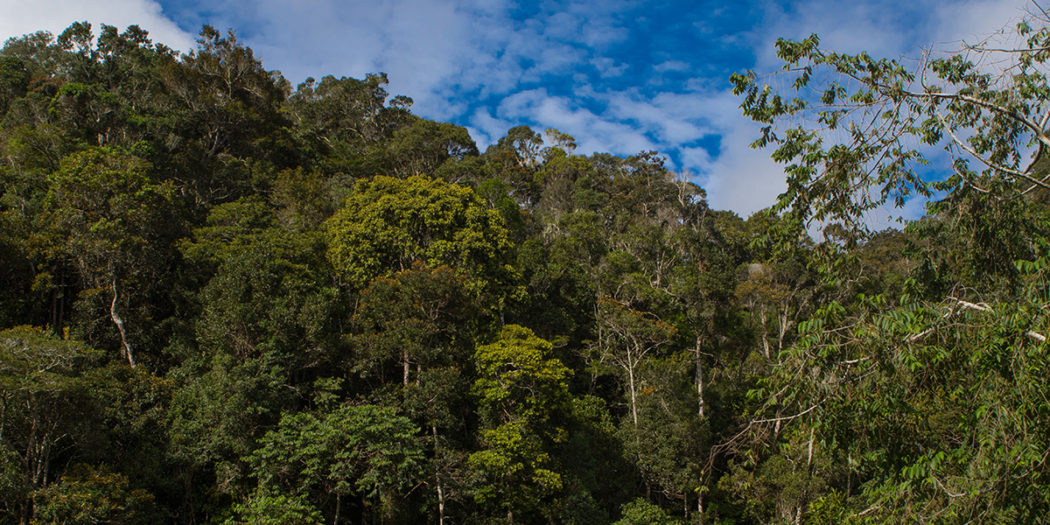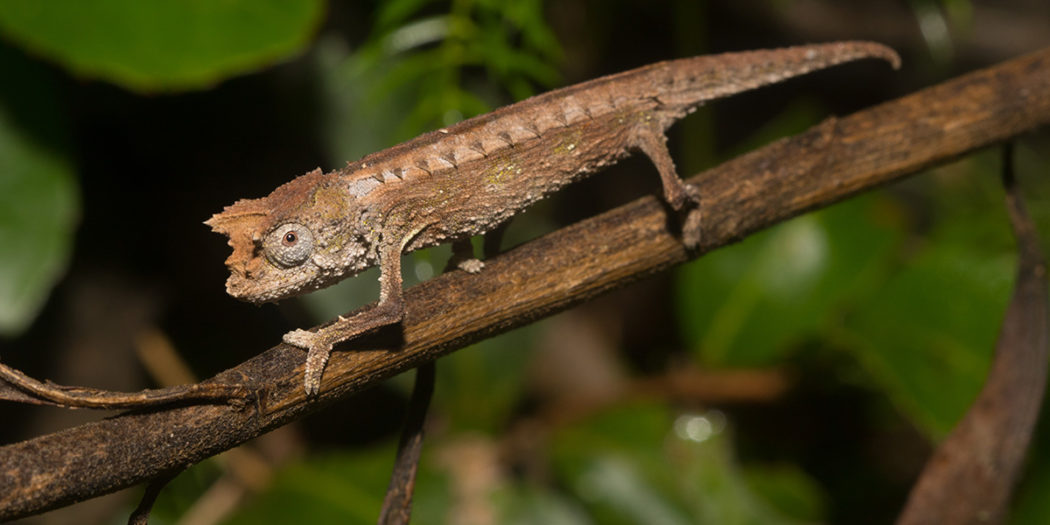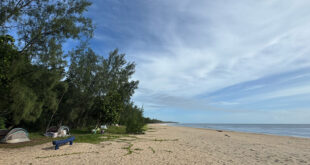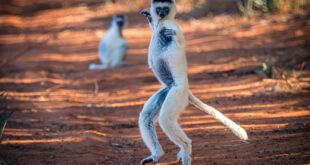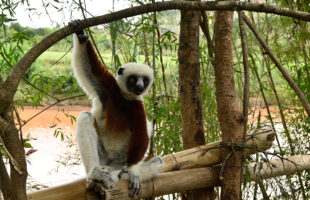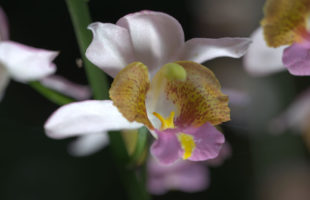Anjozorobe-Angavo:
The name Annjozorobe probably comes from the Madagascan “zozoro”, a certain kind of reed of the area. Legend has it that they were used as hiding places by the “menalamba”, who fought under the French colonial power for the liberation of Madagascar.
Location:
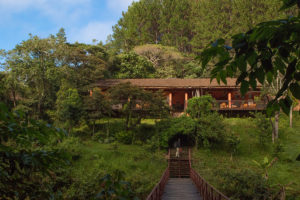
The protected area of Anjozorobe-Angavo is located 90 km northeast of the capital Antananarivo in the highlands of Madagascar. It is largely located in the Analamanga region, some parts already belong to the Alaotra-Mangoro region. The RN3 leads from Tana directly to the small town of Anjozorobe, but the road includes cobblestone and is sometimes damaged. From Anjozorobe the last ten kilometres of the trail lead off-road over a laterite road to the protected area near the tiny hut village Andreba, for which an all-terrain vehicle is absolutely necessary. The trip takes about three hours, whereby the laterite track alone can take up to one hour – in rain, it is very slippery. Taxibrousse or taxis run as far as Anjozorobe, but are not recommended. If you don’t come with your own car, you can organize a transfer via the Akiba Lodge Anjozorobe (former Saha Forest Lodge) on the off-road track.
Information about the protected area:
The rainforest corridor of Anjozorobe-Angavo is one of the last remaining forests of the central highlands and for the most part no longer a primary forest. The first protection efforts were made in 1995. But it was not until 2005 that an area of 410 km² was officially declared the Anjozorobe-Angavo protected area by the responsible ministry. Since then, the non-governmental organization Fanamby has taken care of administration and expansion. It is also working to integrate the 13 villages bordering the forest into the protection of the rainforest. In 2008, the Association Antsahabe Miray (AMI) was founded by locals in the village of Antsahabe, 5 km away, to promote the marketing of sustainably produced products (especially oils) in the region. Around 500 people currently make a living from it.
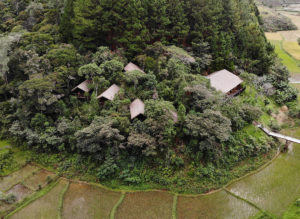
Only a small part of the rainforest is used for ecotourism. Various trails, most of them with quite steep, slippery stairs and sometimes narrow forest paths, are ideal for hiking. From one hour to day-long programs, you can visit a holy (fady) waterfall near the lodge. If you are interested in traditional Malagasy crafts and fieldwork, you can take a specially arranged tour. The entrance fees are between 10,000 and 20,000 Ariary (about 3 to 7 €), depending on the chosen tour. Since it is not a national park, night walks are possible without problems.
Climate:
Usually, temperatures in the highlands exceed 25°C only during the daytime, the nights can become quite cold. Well, it is a good choice to take one more sweatshirt with you to this protected area! Moderate rainfall is normal throughout the whole year, so you should also bring rainproof clothing with your equipment.
Infrastructure:
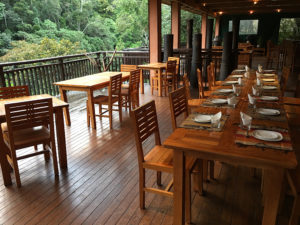
The infrastructure is modest. Fanamby runs the only hotel in the area, the Akiba Lodge Anjozorobe (former Saha Forest Camp). The lodge has an excellent restaurant and ten beautiful, comfortable bungalows with running hot water. At night, there is electricity generated by solar panels during the day. All around there is no infrastructure worth mentioning, neither larger shops nor any further accommodations. Camping is not possible. Since day trips from Antananarivo are not worthwhile, a reservation in the Akiba Lodge is currently the only possibility to visit the protected area Anjozorobe-Angavo.
Fauna & Flora:
Anjozorobe-Angavo is the home of very special lemurs: The black Indri, the black variation of Madagascar’s largest lemur. But the tree canopies of the rainforest leave also a place for rather dark-coloured diademed sifakas, bamboo lemurs (Hapalemur griseus) and black and white ruffed lemurs to jump around and take a rest in the sun. Altogether, there are nine lemur species living here, four of them nocturnal. But honestly, you should know that lemurs over here are not as used to humans as their counterparts in nearby Andasibe-Mantadia. Thus sightings might become a little more difficult, but even more precious.
Having said that, Anjozorobe-Angavo is a real paradise for one special group of nature lovers: Herpetologists. You can watch about 40 species of reptiles and the same number of amphibians in here. Among the most common here are chameleons such as Calumma crypticum and Calumma gastrotaenia as well as the small leaf chameleon Brookesia thieli.
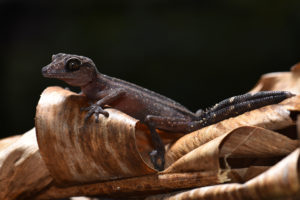
You need much more look and really good eyes to find the rare Calumma globifer or the Graceful Ground Gecko (Paroedura gracilis). For photographers, the Satanic leaf-tailed gecko (Uroplatus phantasticus) and Uroplatus sikorae may be among the most beautiful motives in Anjozorobe, but thanks to their perfect camouflage they are not easy to find it. Botanists will love the flowers of countless orchids at the beginning of the rainy season. They got 90 different orchid species here. Countless ferns, lichens, and lianas make this very dense rainforest a very special experience. Bird friends can watch 70 different species, too.
But the protection of Anjozorobe-Angavo is unsafe. Slash-and-burn agriculture and logging are raising and the few guests who visit the protected area do not really improve the financial situation of the bordering villages. So, better visit this fantastic place soon! Ecotourism is the only way to save this wonderful and fascinating forest.
 MADAMAGAZINE Your Magazine about Madagascar
MADAMAGAZINE Your Magazine about Madagascar
